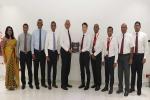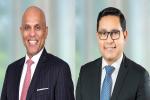This restricts their auditory perception in the external world, and it makes it difficult to distinguish whether a noise is approaching from the front or the back, which can create dangerous situations, in road traffic, for example.
In a project supported by the Baden-Württemberg Foundation, researchers at the University of Ulm have developed an innovative filter element for headphones.
It enables the wearer to distinguish whether an external sound source is approaching from the front or back.
This filter element helps locate external sound sources or general noises in the vertical plane.
That’s why this innovation can prevent dangerous situations, if, for example, a vehicle is approaching and would not be noticed.
Any acoustic object in the wearer’s surroundings can be located precisely with this filter element, especially acoustic objects in the wearer’s “blind spot.”
The problem is that when wearing headphones and playing back sounds, e.g. music, the wearer's ability to perceive sounds in the surrounding environment is significantly limited.
It is difficult or even impossible to determine whether an external sound source is approaching from the front or back (so-called “front-back confusion”).
With the filter element developed at the University of Ulm, external sound can be processed in the wearer’s ears.
The innovative filter element is arranged around the microphone input on the outside of the headphones, just like human hearing.
It reduces sound ambiguities from different directions, especially from vertical directions, regardless of their spectral composition.
The outside of the filter element has specifically shaped structures.
These change external sound into its spectral composition, just as the human ear does, so that spatially dependent frequency modulations occur.
The resulting “head-related transfer functions (HRTFs)” enable precise location of the sound source in the vertical plane and resolve the ambiguities that arise from horizontal localization characteristics.
This is how “front-back confusion” can be avoided.
The wearer can locate any source of sound in the environment, especially auditory objects in their “blind spot.”
These filter elements can be incorporated into all types of headphones, including around the ear and over the ear models, and also in-ear headphones, headsets, and bone conduction headphones in order to prevent “front-back confusion.”
In 2019, the world market for headphones was valued at US$25 billion and will likely grow quickly in coming years, with an average annual growth rate (CAGR) of approximately 20%.
Furthermore, it is fair to assume that consumers’ increasing demand for stylish, attractive designs will crank up sales.
Patents for the invention have been applied for in Germany and various European countries.
Technologie-Lizenz-Büro (TLB) GmbH is helping the Baden-Württemberg Foundation patent and market its innovation.
TLB has been commissioned by the Baden-Württemberg Foundation with the global business implementation of this pioneering technology and offers companies possibilities to license or purchase the patents.






















